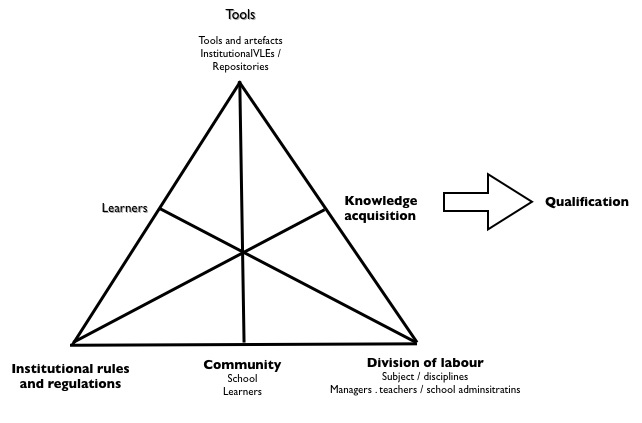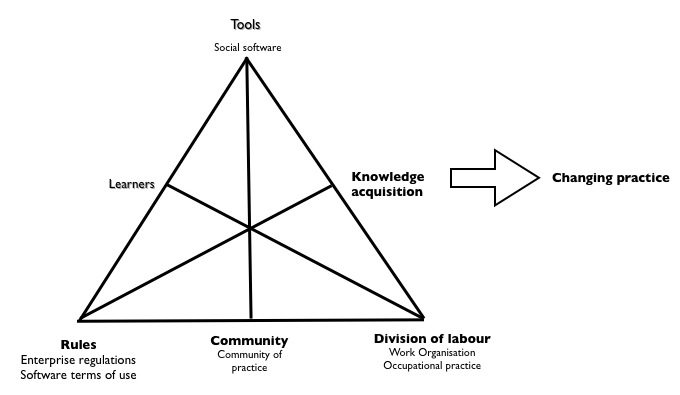This research rocks! At a workshop on ‘Technology enhanced learning in the context of technological, societal and cultural transformation‘, held in Garmisch Partenkirchen earlier this month, I was lucky enough to talk to Elisabetta Adami who was presenting an expellent paper on ‘Individualized participation in public forms of communication and learning: reshaping contexts in a changing world of cultural products.’
But it was her doctoral research which really got me interested. Elisabetta’s dissertation, called Video interaction on YouTube: Contemporary Changes in Semiosis and Communication’, looks at interaction through video replies on YouTube. It is both serious research and fascinating to read.
The entire dissertation, written in English is available on the web and can also be downloaded. Here is an excerpt from the conclusion to the abstract:
“the analysis of the process of video-interaction focuses on (a) its distinctive features and structural characteristics, (b) its semiotic ‘affordances’ (Kress and van Leeuwen, 2001: 67), in terms of the material and social constraints and possibilities which the medium imposes over the semiosis, and (c) the diversified (and often conflicting) semiotic practices with which the affordances are actualized by the interactants.
Rather than following traditionally conceived cooperative or relevance principles and notions of coherence and cohesion, video-interaction works on a ‘loose’ form of individualized participation. While the structural characteristics determine the interactional possibilities, the interactants’ practices exploit the affordances of video-interaction in unexpected ways and often lead to changes in the structure itself (in the same way as the Saussurean parole, when made socially dominant, modifies the langue). Patterns of relatedness in the exchanges are driven by the sign-makers’ diversified interests. More specifically, sign-making relations in the exchanges are established through a system of differentiation-within-attuning, so that interactants bring their distinctive contribution while keeping the same (either formal or semantic) theme, set by the initial video. In this sense, video-interaction is analogous to collective forms of artistic improvisation (e.g., the genre of variation in music or the contemporary free-style). Video responses take up – and actualize – one or more prompts within the range of possibilities set by the initial video. This prompt-response relation generally disregards the interlocutor’s intended meaning, it often does not follow relevance principles, it presents (traditionally considered) marked textual organizations, and does not build coherent exchanges. Not only is (intertextual) implicitness widely practiced, but also formal attuning is sometimes more regarded than (semantic) coherence for the establishment of relatedness in the exchange.
Rather than on the interactants’ mutual understanding, video-interaction hinges on a playful and challenging engagement with the medium and with the other texts in the exchange, by exploiting maximally the representational possibilities of both.
Patterns of relatedness are established through an interest-driven selection, transformation, assemblage and recontextualization of (often formal, at times implicit or backgrounded) elements of the initial video or of other texts. This way, sign-making is often done by means of a copy-and-paste technique, which follows the interactants’ diversified interests, and disregards coherence or the signmaker’s intended meaning. Responses frequently and intentionally produce their texts through misunderstanding and exploit maximally the potential semantic ambiguity of the interlocutor’s text. Incoherent exchanges are successful and generally acknowledged and accepted by interactants. In this sense, videointeraction epitomizes the changes in representation and communication which are taking place in our contemporary semiotic landscape, whereby traditional systems of coherence are disregarded and (traditionally considered) incoherent or noncohesive exchanges are acceptable as the result of representations produced through the selection, copy and paste, recontextualization and forwarding of other texts.
These contemporary changes in representation and communication need analogous changes in the theories of communication, while their description requires adequate analytical models. Therefore the thesis concludes by hypothesizing the usefulness of the theoretical and analytical framework devised for the research to the description of contemporary forms of communication.”

